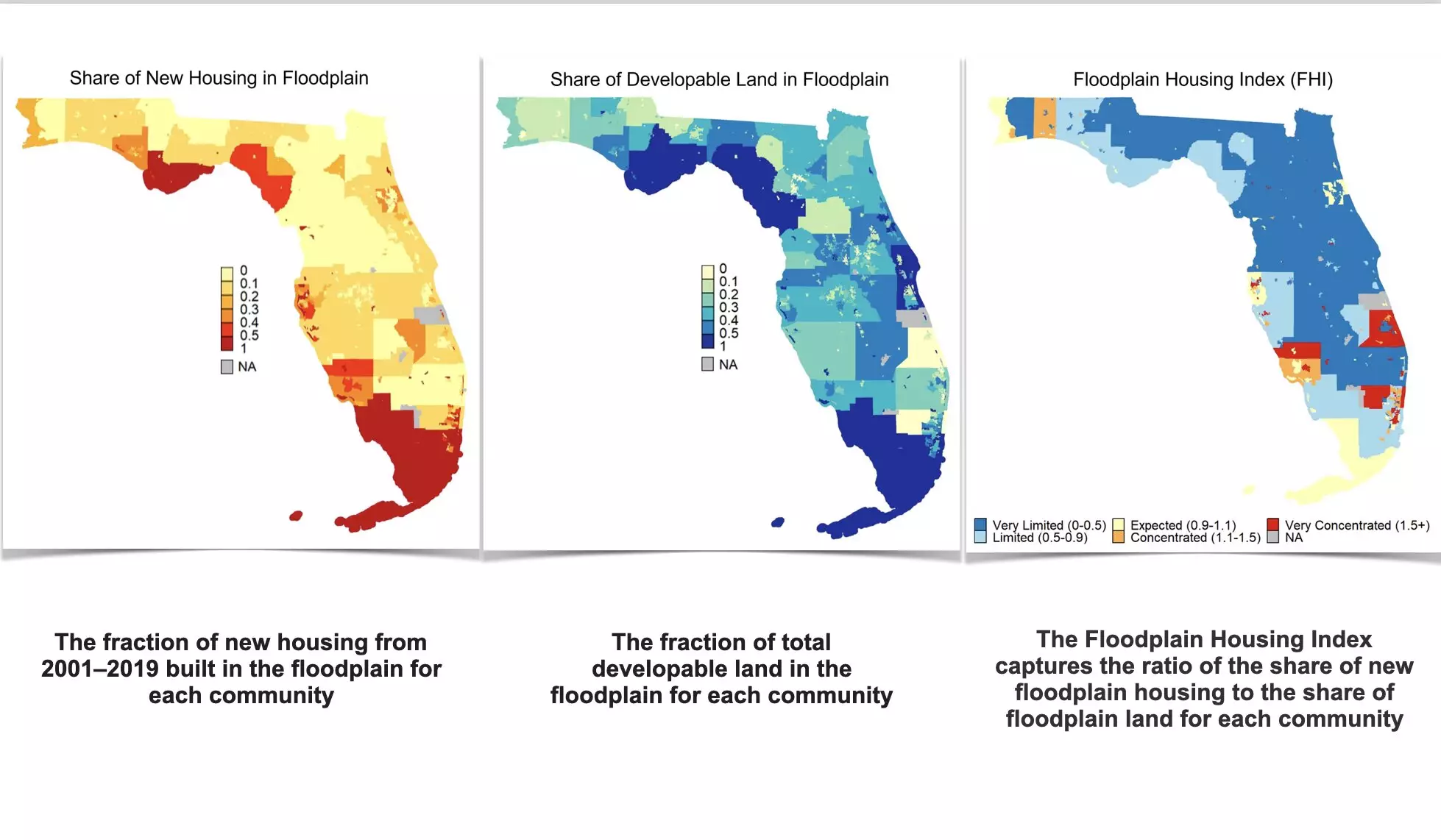With the increasing frequency and intensity of flooding events across the United States, the analysis of floodplain development has never been more crucial. Researchers from the University of Miami’s Rosenstiel School of Marine, Atmospheric, and Earth Science have illuminated alarming trends regarding the utilization of floodplains for residential development. Their study, published in the journal Earth’s Future, brings to light the fact that over two million acres of floodplain areas have been developed in the last two decades, with Florida bearing witness to the highest concentration of such developments. This analysis is not merely academic; it reflects a changing paradigm in land use that intertwines with the principles of public safety and environmental sustainability.
The researchers focused on combining comprehensive geospatial data, including land use and impervious surfaces, alongside housing data and floodplain maps. Their results were striking: approximately 840,000 new residential units have emerged within floodplains, with a staggering 398,000 located in Florida alone. This accounts for 21% of all new housing developments in the state, marking it as a significant concern for these areas that are already vulnerable to flooding. Notably, the authors pointed out that while these figures are high, they could be even more pronounced if development patterns were proportional to geographic floodplain availability. They estimated that if proportionality were achieved, up to 40% of Florida’s new housing would be in flood-prone regions.
Intriguingly, the study highlights that 74% of U.S. communities engage in limited new development within floodplains, with 87% restricting housing through local regulations. This suggests a chasm between awareness and action among communities. Specifically, coastal areas were identified as more prone to new developments in floodplains compared to their inland counterparts. This trend poses critical questions about urban planning priorities in light of climate change, which may exacerbate flooding risks. The findings reveal an inherent contradiction; communities aware of their vulnerabilities are often those that, paradoxically, make decisions that may heighten their exposure to disasters.
The study also reveals insights into the relationship between regulatory practices and development outcomes. Communities participating in FEMA’s Community Rating System, which provides incentives for certain flood-prevention measures, demonstrated an increased tendency to develop within floodplains. However, the study’s authors, including lead researcher Armen Agopian, stress that mere participation in such programs is insufficient. It underlines the necessity for enhanced floodplain management practices—without these, floodplain developments may persist, exacerbating risks not only to infrastructure but also to human life.
One of the key contributions of this study is its identification of successful community practices that avoid floodplain development. The results portray a narrative that encourages learning from areas that proactively mitigate the risks associated with floodplain construction. These communities often engage in strategic urban planning that prioritizes resilience against flooding, effectively sidestepping potential disasters before they unfold. There is a wealth of knowledge to glean from such proactive stances, particularly as climate change escalates the unpredictability of weather patterns.
This groundbreaking study paves the way for a critical reevaluation of floodplain policies across the United States. It provides a foundation for understanding how local government actions or inactions influence overall community vulnerability to flooding. As the data indicates, meaningful reform is essential not just at the federal level but also within local jurisdictions that manage land use and hazard mitigation. By focusing on sustainable development practices and fostering a culture of safety, communities can mitigate the impacts of flooding and prioritize the welfare of their residents. Embracing such proactive measures may ultimately safeguard homes, protect infrastructure, and save lives in the face of increasingly volatile weather conditions.


Leave a Reply